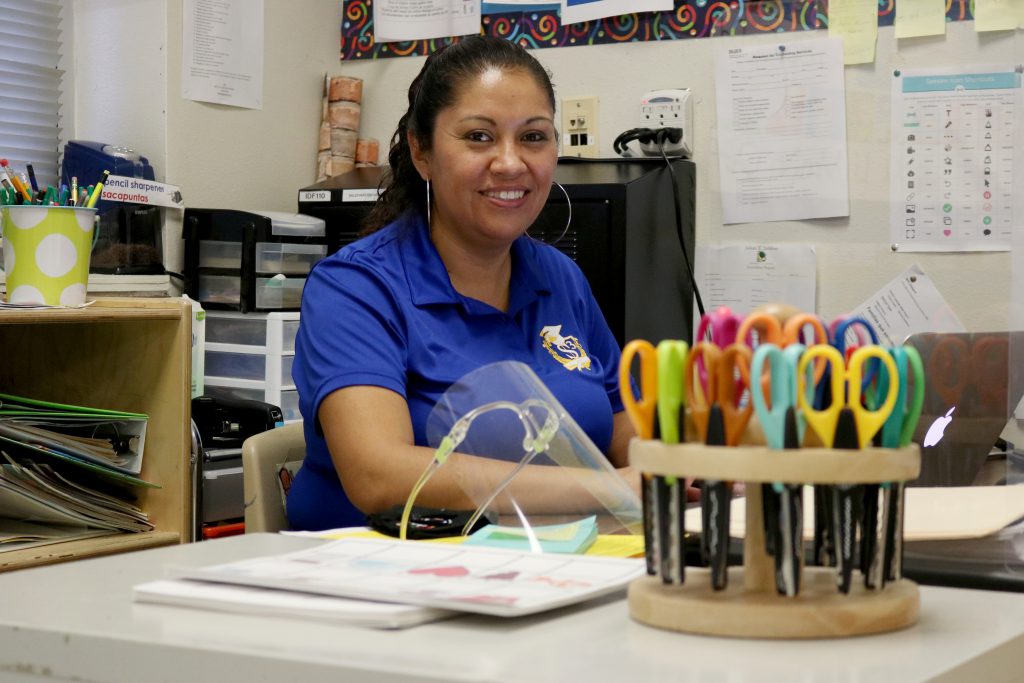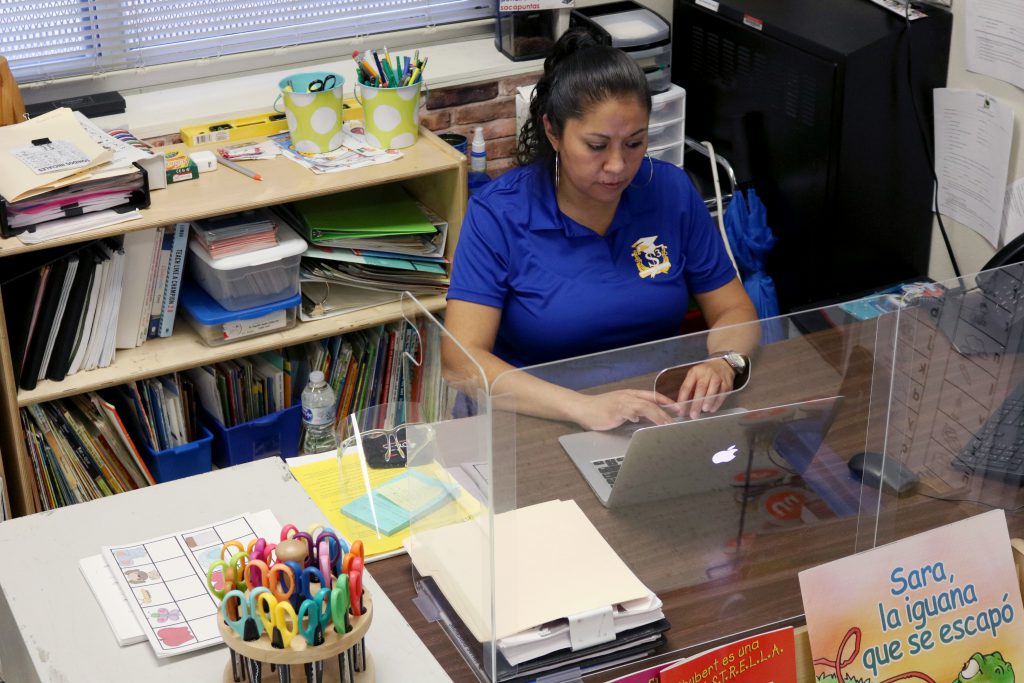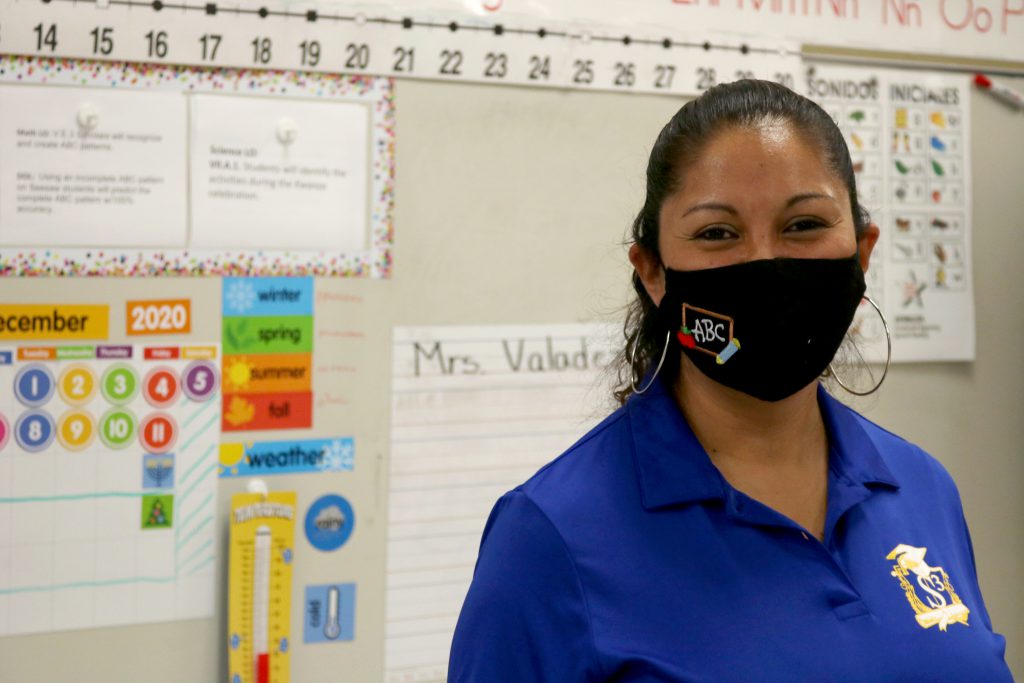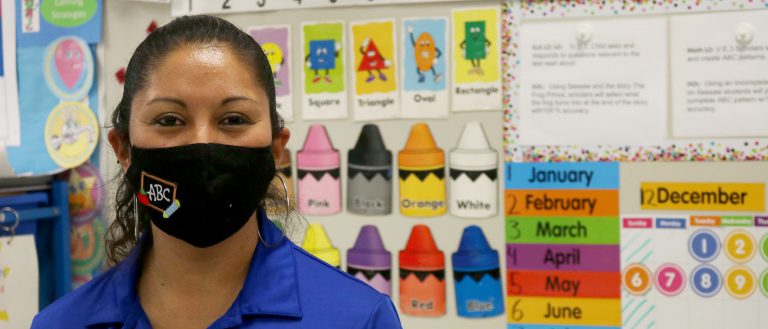In an effort to build trusting relationships with families and learn if there are any specific barriers they can help students overcome, Dallas ISD has expanded its home visitation program to serve five additional schools with predominantly Black student populations.
Through the Home2Home Visit Initiative, select teachers from Birdie Alexander Elementary School, and Boude Storey, Kennedy-Curry, O. W. Holmes and Zumwalt middle schools are now conducting virtual home visits with parents that opt in the program. The campuses join the more than 300 teachers from 103 schools already participating in the initiative.
Pam Lear, the Dallas ISD chief of staff and racial equity, announced that the elementary school and four middle schools were added in an effort to increase parent engagement and to strengthen a home-school connection.
The Dallas ISD’s Parent Advocacy and Support Services Department manages the Home2Home Initiative, where teachers are offered supplemental pay to visit families at their homes, or in the case of the pandemic, conduct virtual visits.

“This year, as a result of the Racial Equity plan, we focused on schools that were traditionally serving Black populations,” said Liliana Valadez, executive director of Dallas ISD’s Parent Advocacy and Support Services Department.
“We specifically invited schools with a predominant Black student population, so that we can enhance family engagement at those campuses. In alignment with the racial equity plan, we will continue to invite schools with predominantly Black and English-Learner student populations,” Dr. Valadéz said.
During the home visits, teachers ask about the interests of the student and the goals of the family for that student. They learn more about their students are and what they want to achieve. These interactions allow the educator to further understand whether the student faces any barriers, and if there is any specific assistance that they can provide – whether it’s in the classroom, connecting them with a Dallas ISD department, or even a third-party agency that can provide for those needs.
“It’s about building a trusting relationship with the families,” Valadez said. “The teachers want parents and guardians to work with them and partner with them. The child will see the partnership, and how everyone is on the same page and has the same goals for the student. And that creates a better environment to build a trusting relationship. IF there is a need to address challenges later in the year, the interactions are likely to be more positive, given that trust and a relationship has already been established.”
Pre-K teacher Beti Valadez is a home-visitation veteran who has been involved with the program for the last four years. For the last 14 years, she has taught at Julian T. Saldivar Elementary – a Northwest Dallas school that serves a high English-Learner and newcomer student population.
Before schools closed in March due to the Covid-19 threat, Beti visited several students’ homes, each twice a year. Because of the pandemic, all home visits have been taking place over video-chat. Whether they’re virtual or face-to-face, home visits strengthen the relationships between her students’ families and establish an environment of mutual collaboration, she said.

“Many parents are under the assumption that their role in their students’ education ends when they drop their children off at the school,” Beti said. “But the responsibility for the student’s learning does not rest solely on the teacher. The teacher, the parents and the student are all responsible for the student’s success. In order for the student to make progress, they all must work as a team.”
Breaking Assumptions
Beti had a student in her Pre-K classroom who had recently moved to Dallas from Honduras. The student’s parents didn’t communicate with the teachers, and the student was struggling in class.
But the teacher didn’t give up on her mission to serve the student and scheduled a home visit. During the meeting, Valadez learned that the student’s father was arrested and deported, only one month after they had arrived in the U.S.
At the time, the student’s mother had no job or vehicle. She had to find work quickly and work extra so that they could afford rent and eventually return to Honduras. She had to walk to-and-from work every day – even in the cold months.
“She never talked to me. She never said anything to me. But when you sit down with them, in their house, in their space, and listen to them, that’s when they begin to trust you,” Beti said.
“They don’t only talk to you about their problems, but also about their dreams and their aspirations for their sons and daughters,” the teacher said.
While the girl and her mother moved away at the end of the 2019-2020 school year, Beti understood the struggles that the family was dealing with and supported the student from her classroom to the best of her ability.
Five years in the making
The program launched five years ago, when Liliana Valadez led the North Dallas feeder pattern and Lear supervised the Pinkston feeder pattern. They both worked as executive directors for school leadership when Dallas ISD administrators approached them with the opportunity to lead a districtwide home-visit effort. In partnership with Flamboyan Foundation, the executive directors selected schools, trained the teachers and launched the home-visit program.

The 2020 – 2021 school year is the first year that Dallas ISD is responsible for full execution of the program. Dallas ISD’s Parent Advocacy and Support Services Department, where Valadez currently works as executive director, is responsible for implementation, professional development and data tracking of home visits.

